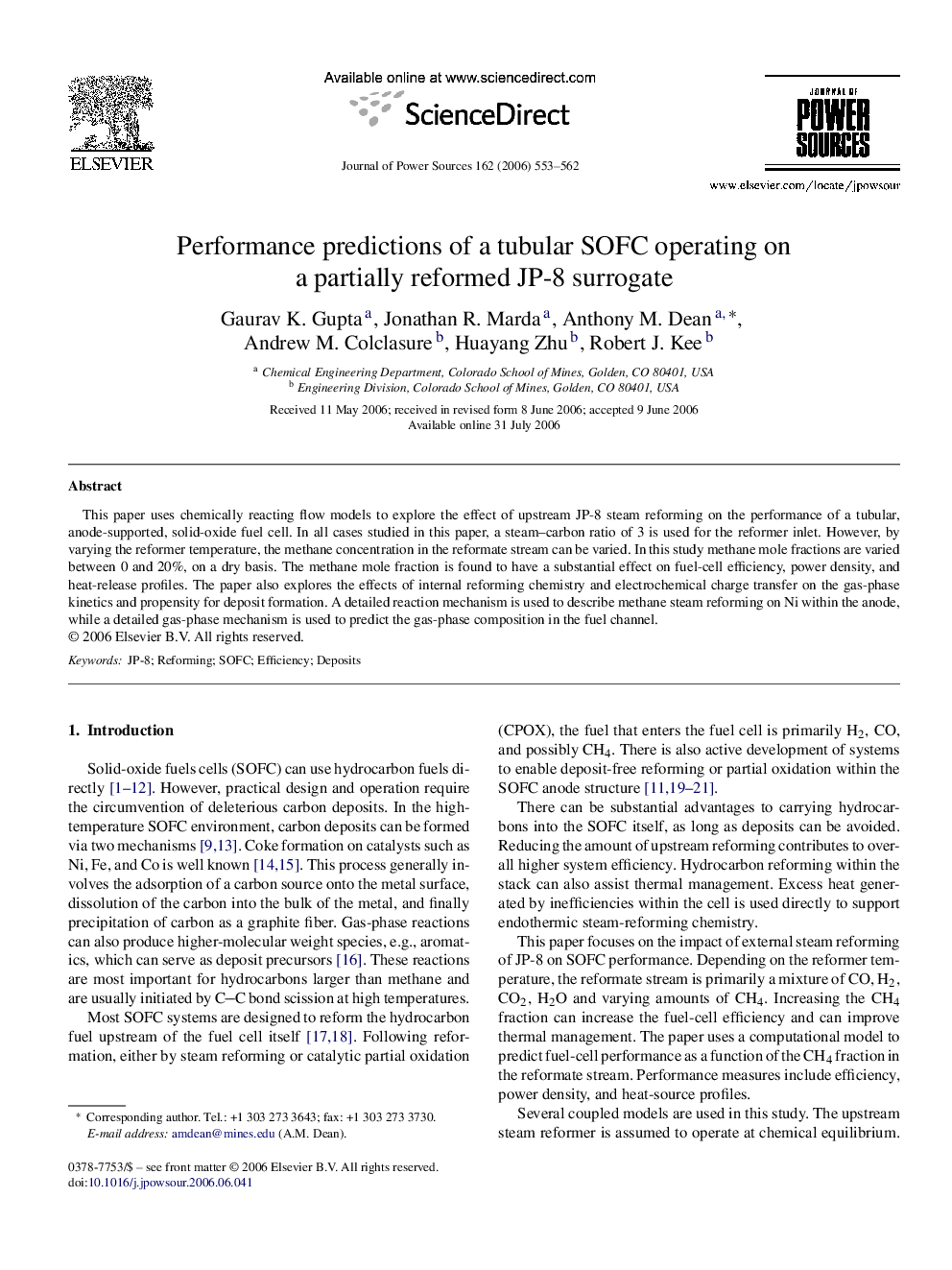| Article ID | Journal | Published Year | Pages | File Type |
|---|---|---|---|---|
| 1291879 | Journal of Power Sources | 2006 | 10 Pages |
This paper uses chemically reacting flow models to explore the effect of upstream JP-8 steam reforming on the performance of a tubular, anode-supported, solid-oxide fuel cell. In all cases studied in this paper, a steam–carbon ratio of 3 is used for the reformer inlet. However, by varying the reformer temperature, the methane concentration in the reformate stream can be varied. In this study methane mole fractions are varied between 0 and 20%, on a dry basis. The methane mole fraction is found to have a substantial effect on fuel-cell efficiency, power density, and heat-release profiles. The paper also explores the effects of internal reforming chemistry and electrochemical charge transfer on the gas-phase kinetics and propensity for deposit formation. A detailed reaction mechanism is used to describe methane steam reforming on Ni within the anode, while a detailed gas-phase mechanism is used to predict the gas-phase composition in the fuel channel.
